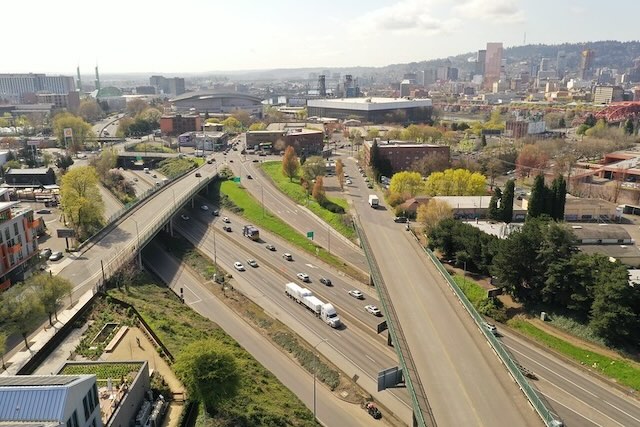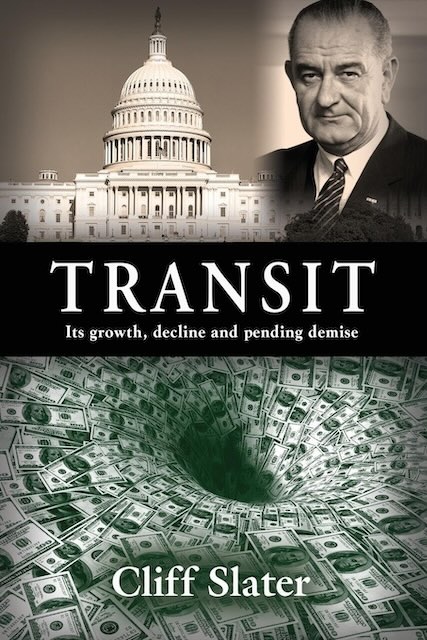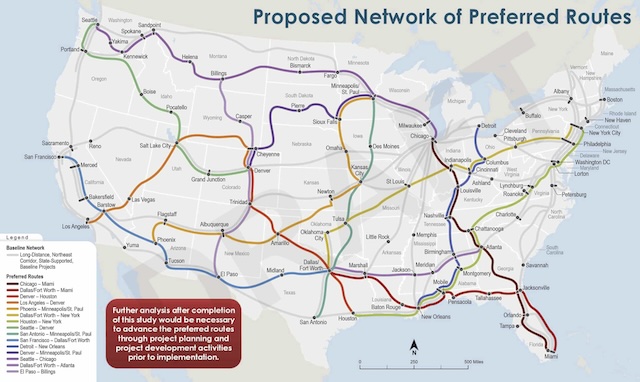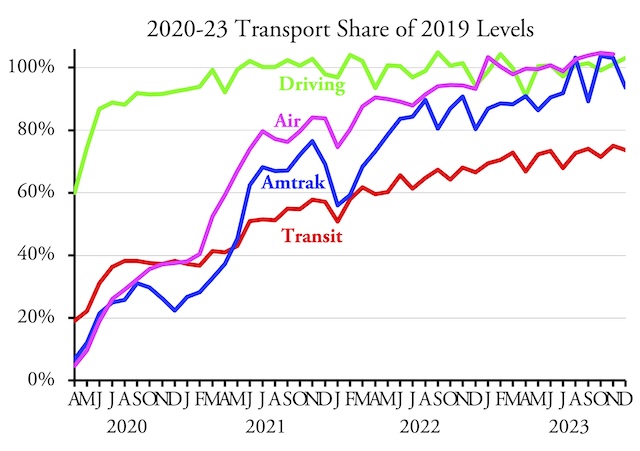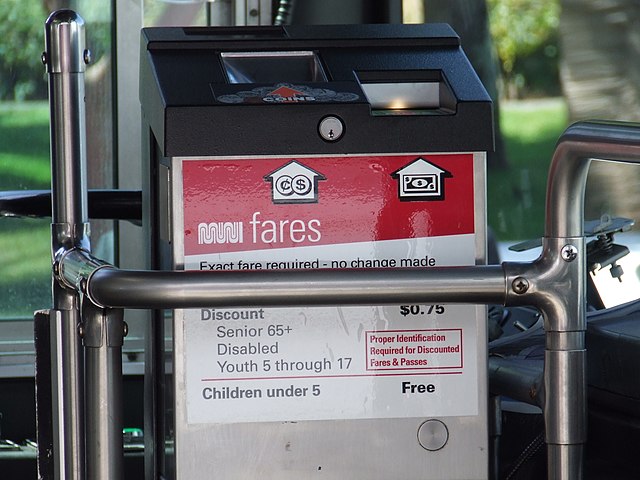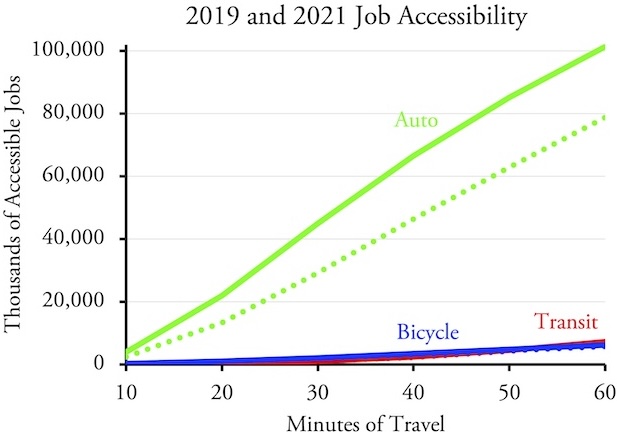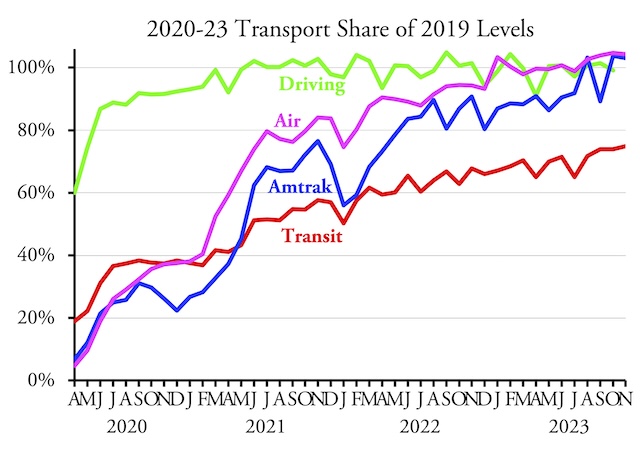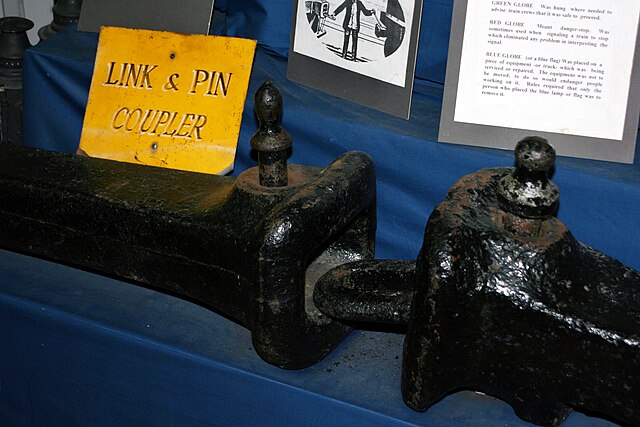Transit in 2022 carried less than 1 percent of passenger travel in 461 out of the nation’s 487 urban areas and less than half a percent of passenger travel in 426 of those urban areas. It carried more than 2 percent in only 7 urban areas and more than 3 percent in just two: New York and San Francisco-Oakland. These numbers are calculated from the 2022 National Transit Database released last October and the 2022 Highway Statistics released last month, specifically table HM-72, which has driving data by urban area.
Highways were a little less congested in 2022 than before the pandemic. Oregon Department of Transportation photo.
In 2019, transit carried 11.6 percent of motorized passenger travel in the New York urban area, a share that fell to 8.5 percent in 2022. Transit carried 6.8 percent in the San Francisco-Oakland area in 2019, which fell to 3.6 percent in 2022. Transit carried around 3.5 percent in Chicago, Honolulu, Seattle, and Washington urban areas, which fell to 2.5 percent in Honolulu, 2.1 percent in Seattle, and less than 1.8 percent in Chicago and Washington in 2022. Anchorage, Ithaca, and State College PA are the only other urban areas where transit carried more than 2 percent of travel in 2022. Continue reading

